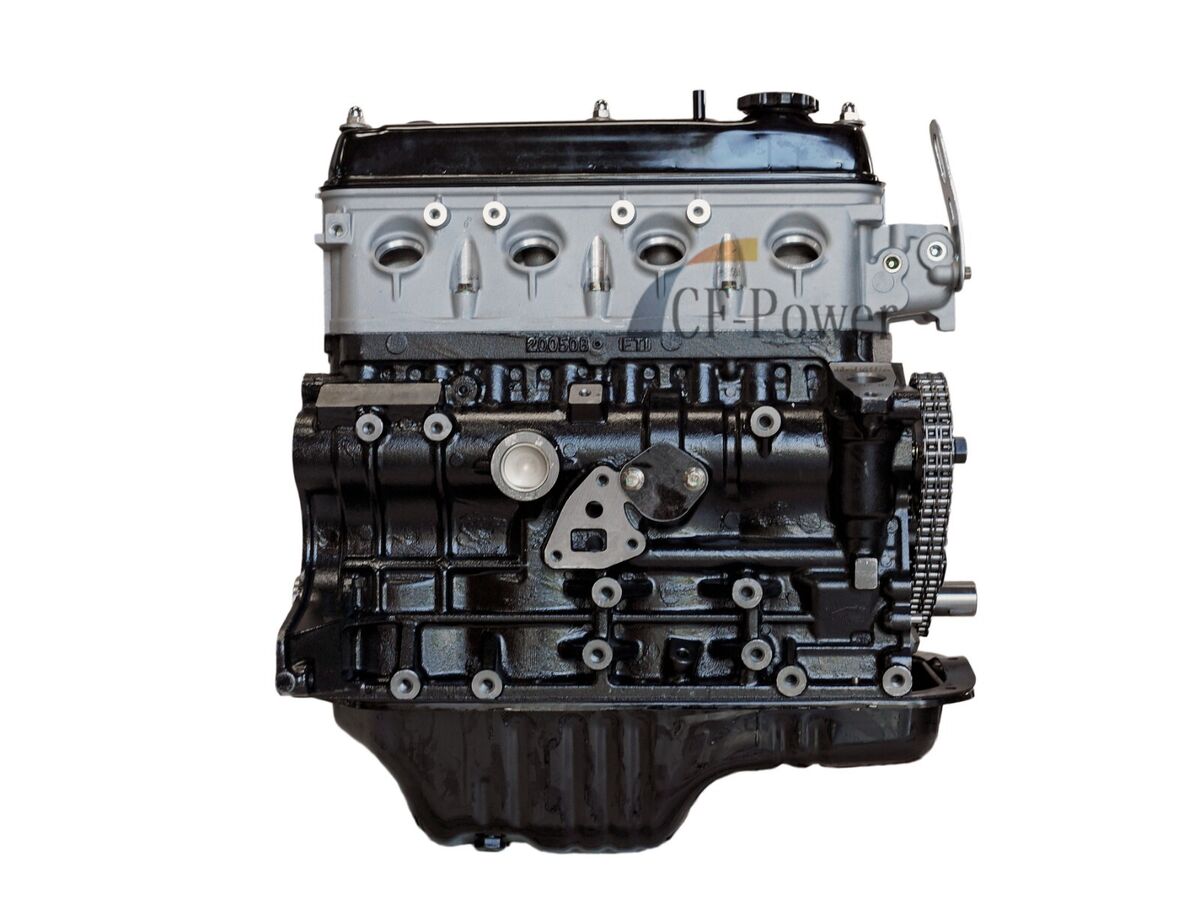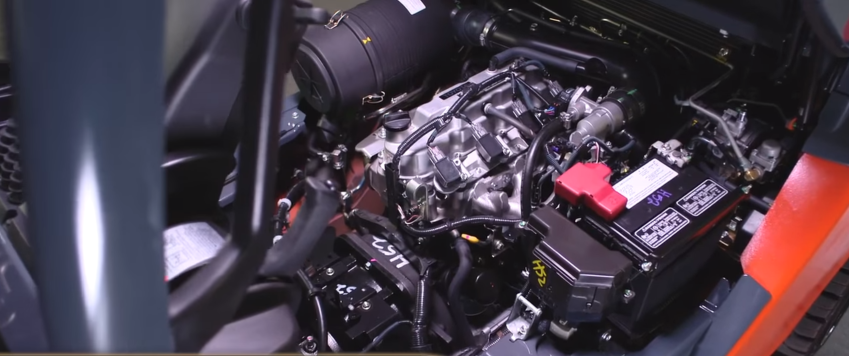Understanding the Mechanics Behind the 4Y Engine’s Power and Durability
Understanding the Mechanics Behind the 4Y Engine’s Power and Durability
Blog Article
The Ultimate Guide to the Engine: Key Insights for Every Automobile Enthusiast
Comprehending the engine is basic for any type of auto fanatic, as it functions as the heart of the car and determines its performance. This overview provides a thorough evaluation of engine makeup, kinds, and the technicians behind their operation, including the ingenious modern technologies that are reshaping the vehicle landscape. It highlights the vital nature of maintenance practices that can substantially impact an engine's life expectancy. However, the intricacies of engine dynamics and the most current advancements in technology present inquiries that warrant further expedition. What might these understandings disclose about the future of automobile design?
Makeup of an Engine
Comprehending the composition of an engine is important for any type of cars and truck enthusiast seeking to dive deeper into automobile auto mechanics. An internal burning engine mainly contains several key elements that operate in unison to transform gas right into power.
At the heart of this system lies the cylinder block, which houses the cylinders where combustion takes place. Piston movement within these cyndrical tubes is helped with by the crankshaft, which converts direct movement into rotational energy. Additionally, the camshaft plays a crucial function in managing the opening and closing of the engine's shutoffs, guaranteeing proper air-fuel blend consumption and exhaust gas expulsion.
Other essential elements consist of the fuel system, which supplies the engine with the essential fuel, and the ignition system, accountable for initiating burning - 4y engine. The air conditioning and lubrication systems are additionally important, keeping optimum operating temperature levels and decreasing rubbing, respectively
Engine Kinds and Configurations
A diverse array of engine kinds and configurations exists, each offering unique benefits and drawbacks tailored to different driving demands and choices. The most typical engine types consist of inline, V, flat, and rotary setups.
Inline engines, including cyndrical tubes set up in a solitary line, are recognized for their simpleness and performance. They are frequently located in portable cars, providing a balance of power and economic situation. V engines, identified by their 2 banks of cylinders set up in a V form, offer greater performance and smoother operation, making them prominent in sports and deluxe vehicles.
Level engines, or boxer engines, have actually flat opposed cylinders, which add to a reduced center of gravity, boosting vehicle security. These are generally seen in brand names like Subaru and Porsche.
Rotating engines, although less typical, use a distinct layout with a triangular blades and deal high power-to-weight ratios. They master small and lightweight applications, largely seen in Mazda lorries.
Each engine type serves specific performance characteristics, weight circulations, and gas efficiencies, making certain that auto lovers can select the right engine arrangement to match their driving design and lorry requirements.

Just How Engines Function
Engines, no matter of their type or arrangement, operate fundamental principles that regulate their efficiency and effectiveness. At their core, engines transform gas into power through a collection of regulated explosions or compressions. This procedure generally involves four primary strokes: consumption, exhaust, power, and compression.
During the intake stroke, the engine attracts in a mixture of air and fuel. In the power stroke, a trigger fires up the compressed combination (in fuel engines) or the mix sparks spontaneously (in diesel engines), resulting in a rapid growth of gases that pushes the piston down.
The effectiveness of an engine is influenced by numerous variables, including the layout of the combustion chamber, the kind of fuel made use of, and the accuracy of the engine's elements. Understanding these essential concepts is vital for automobile fanatics who seek to appreciate the intricate mechanics behind their cars, along with for those intending to enhance performance via modifications and tuning.
Technologies in Engine Innovation
In the last few years, developments in engine technology have actually significantly changed the automotive landscape, improving both efficiency and environmental sustainability. One of one of the most significant advancements is the growth of turbocharging and supercharging, which permits smaller engines to create better power outcomes without compromising gas efficiency. This has actually caused a surge in the popularity of downsized engines, offering makers with the capacity to satisfy rigorous discharges policies while preserving efficiency requirements.
Furthermore, hybrid and electrical powertrains are reshaping the engine standard. Hybrid systems incorporate interior combustion engines with electrical motors, enhancing fuel intake and minimizing discharges. Totally browse around these guys electrical vehicles (EVs) get rid of the burning engine altogether, counting on innovative battery technology to supply immediate torque and excellent velocity.
In addition, the combination of synthetic intelligence and artificial intelligence in engine monitoring systems permits real-time optimization of efficiency specifications, boosting efficiency and responsiveness. Innovations such as variable shutoff timing and straight fuel injection additionally web improve combustion procedures, making best use of power outcome while decreasing waste.
As the automotive market remains to advance, these technologies in engine technology will certainly play a critical function fit the future of mobility, focusing on both efficiency and sustainability.
Maintenance Tips for Lovers
Preserving an engine is as important as the innovations that enhance its performance. Normal maintenance not only extends the life of your engine but also guarantees ideal efficiency.
Inspect and change air filters occasionally to make sure proper air flow, which is essential for combustion performance. A stopped up air filter can lead to reduced efficiency and enhanced gas intake. Monitor the coolant levels to prevent getting too hot, and change coolant according to the service routine. 4y engine.

Verdict
To conclude, a thorough understanding of engine composition, kinds, and auto mechanics is crucial for automotive lovers. The exploration of advancements such as turbocharging and hybrid systems highlights the innovations in performance and effectiveness. Additionally, normal maintenance techniques, consisting of oil modifications and air filter checks, are essential for ensuring optimal engine functionality and durability. Mastery of these ideas cultivates a deeper admiration for engine dynamics and improves the general driving experience.

Engines, no matter of their kind or arrangement, run on fundamental principles that control their performance and effectiveness. In the power stroke, a trigger fires up the compressed mix (in gasoline engines) or the combination stirs up automatically (in diesel engines), resulting in a quick growth of gases that presses the piston down.In recent years, innovations in engine technology have substantially changed the vehicle landscape, boosting both performance and ecological sustainability.
Report this page